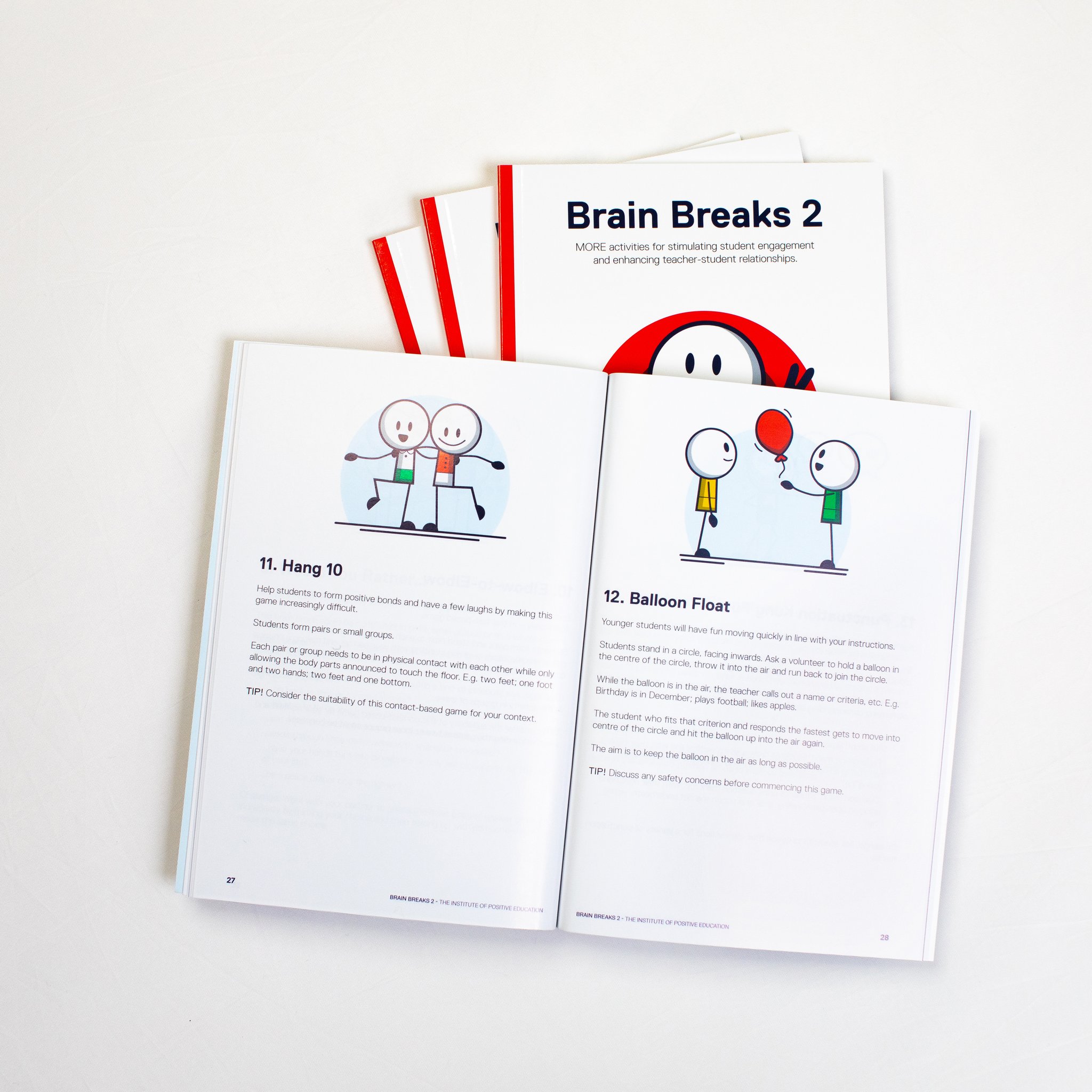
With classes at Tenison Woods using brain breaks each day to support the wellbeing of students I wanted to take this opportunity to share this excellent article from the Head of Positive Education Institute at Geelong Grammar.
The definition of a brain-break is any short activity that is a break from the specified learning activity and is designed to enhance relationships (teacher-student and/or student-student).
The experience of school for many students today is dominated by sitting. For much of their day, students are expected to sit still and learn. Whilst it is well- established that sedentary behaviour is associated with a range of health risks such as obesity and cardiac failure, neuroscience has also uncovered many reasons why we might also question such a sedentary approach to learning. Brain-breaks involve taking a short break in a lesson to engage in a burst of physical movement or a fun mental challenge. Pioneer of brain-based learning, Eric Jensen (2000) explains that movement has a positive effect on learning by:
Studies over the last 15 years have shown promising results, suggesting brain-breaks have multiple benefits for student learning. A multitude of studies have shown that regular brain-breaks across the school day enhance students’ cognitive functioning and ability to sustain focus for academic work (Donnelly et al, 2009; Grieco, Jowers & Bartholomew, 2009; Ma, Mare & Gurd, 2014; Mahar, et al, 2006; Mahar, 2011). Importantly, brain-breaks only take up a small amount of lesson time, yet the benefits of increased engagement levels and cognitive functioning have been found to significantly increase academic performance. Research has shown that students participating in regular brain-breaks display improved academic performance in core subjects like Mathematics and English, as well as academic standardised tests (Álvarez-Bueno, et al, 2016; Ahamed, et al, 2007).
Additionally, brain-breaks have been shown to increase students’ perceived competence and raise classroom motivation levels (Vazou et al, 2012). Brain-breaks decrease students’ sedentary time and increase their overall level of physical activity across the day. Studies have also shown brain-breaks can have a positive influence on students’ Body Mass Index (BMI) and can support students maintaining a healthy weight (Liu, et al, 2008). Finally, and not surprisingly, brain-breaks have been shown to improve classroom behaviour and decrease student referrals for discipline issues (Sibley, et al, 2008).
By providing students a social and fun break in a lesson, there is an increased opportunity and a new context for strengthening teacher-student relationships. Classrooms are dynamic environments where interactions between students and teachers continuously and powerfully affect learning, wellbeing and development. Brain-breaks alter the classroom climate by introducing a new collective action. Such activities have been shown to increase students’ positive emotions and enjoyment within the classroom (Howie et.al.,2014; Vazou, 2014). Whilst there is no known research investigating the direct link between brain-breaks and teacher-student relationships, there is mounting evidence to suggest that they are positively correlated in a bi-directional fashion.
Research has clearly shown that brain-breaks are likely to increase student engagement; when students are more engaged, teachers become more engaged, helping to nurture positive relationships (Hamre & Pianta, 2005). The positive student outcomes linked to regular brain-breaks (such as enjoyment, positive affect, improved classroom climate, intrinsic motivation), all have the potential to contribute to a caring community of learners. As students progress through school, relationships with their teachers tend to become more distant and less comfortable, particularly for those students with low intrinsic motivation (Harter, 1996). Research has suggested that students have more positive perceptions of their teachers when they become more involved in their social environments (Skinner & Belmont, 1993). Brain-breaks, therefore, offer a possible way to protect students against declines in motivation and feelings of disconnection that some students may experience.
Justin Robinson
Director of the Positive Education Institute
Tom Atyeo
Wellbeing Coordinator